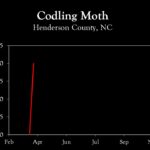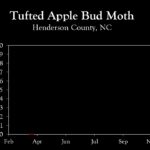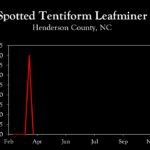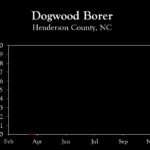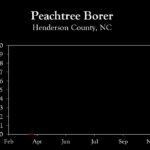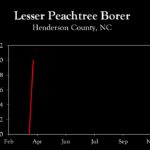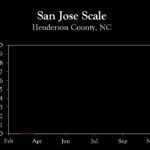WNC Orchard Insect Populations for April 15, 2021
go.ncsu.edu/readext?789713
en Español / em Português
El inglés es el idioma de control de esta página. En la medida en que haya algún conflicto entre la traducción al inglés y la traducción, el inglés prevalece.
Al hacer clic en el enlace de traducción se activa un servicio de traducción gratuito para convertir la página al español. Al igual que con cualquier traducción por Internet, la conversión no es sensible al contexto y puede que no traduzca el texto en su significado original. NC State Extension no garantiza la exactitud del texto traducido. Por favor, tenga en cuenta que algunas aplicaciones y/o servicios pueden no funcionar como se espera cuando se traducen.
Português
Inglês é o idioma de controle desta página. Na medida que haja algum conflito entre o texto original em Inglês e a tradução, o Inglês prevalece.
Ao clicar no link de tradução, um serviço gratuito de tradução será ativado para converter a página para o Português. Como em qualquer tradução pela internet, a conversão não é sensivel ao contexto e pode não ocorrer a tradução para o significado orginal. O serviço de Extensão da Carolina do Norte (NC State Extension) não garante a exatidão do texto traduzido. Por favor, observe que algumas funções ou serviços podem não funcionar como esperado após a tradução.
English
English is the controlling language of this page. To the extent there is any conflict between the English text and the translation, English controls.
Clicking on the translation link activates a free translation service to convert the page to Spanish. As with any Internet translation, the conversion is not context-sensitive and may not translate the text to its original meaning. NC State Extension does not guarantee the accuracy of the translated text. Please note that some applications and/or services may not function as expected when translated.
Collapse ▲Petal Fall Spray Options
 With petal fall spray imminent in most locations, insecticide options will depend on what was applied before bloom and whether or not OFM mating disruption is being used. Another consideration is the level of bee activity in an orchard. For insecticides toxic to bees, which include many recommended at petal fall, it is important that bees are removed from orchards before sprays are applied.
With petal fall spray imminent in most locations, insecticide options will depend on what was applied before bloom and whether or not OFM mating disruption is being used. Another consideration is the level of bee activity in an orchard. For insecticides toxic to bees, which include many recommended at petal fall, it is important that bees are removed from orchards before sprays are applied.
The key insect pests to target at petal fall include plum curculio, oriental fruit moth and rosy apple aphid. Among these insects, the plum curculio presents the greatest threat, because petal fall is essentially the only time that it can be effectively controlled, while other options are available for OFM and rosy apple aphid.
Plum Curculio: This remains one of the most common causes of insect damage to apples in this region, and effective control is highly correlated with petal fall sprays. Although the severity of damage varies considerably among orchards, plum curculio is ubiquitous and can cause damage in virtually every orchard. In orchards with a history of problems, sprays should be made as quickly after petal fall as possible. In orchards where damage is historically low, there is usually a longer buffer period and sprays can be slightly delayed. However, 1st Cover is often too long to wait.
Rosy Apple Aphid: Rosy apple aphid is a sporadic pest, but it can be difficult to monitor, and control with curative applications of insecticides can be difficult. Most neonicotinoids and closely related insecticides are effective against RAA, and effective control can be achieved before bloom at Pink, or after bloom at petal fall.
Oriental Fruit Moth: Biofix at the research station in Henderson County was set on 27 March (codling moth biofix was 9 April). In orchards using mating disruption for OFM, insecticidal control of the first generation is not necessary, so focus on plum curculio and rosy apple aphid if relevant. However, where mating disruption is not used, an insecticide effective against this pest is recommended to control the first generation.
Insecticide Options: Because of the importance of plum curculio, only those insecticides with activity against this pest are recommended at petal fall.
Relative Efficacy Chart for Petal Fall Insecticide Options |
||||
| (― = No activity; P = poor; F= Fair; G = Good, E = excellent) | ||||
| Insecticide | Plum curculio | OFM | RAA | Toxicity to bees |
| Actara | E | F | E | Highly toxic |
| Assail | F | G | E | Mod. toxic |
| Avaunt | G | G | — | Mod. toxic |
| Imidan | E | E | — | Mod. toxic |
| Verdepryn | G | E | — | Highly toxic |
| Voliam Flexi* | E | E | E | Highly toxic |
| *Voliam Flexi is a premix that includes thiamethoxam (a.i. in Actara) and chlorantraniliprole (a.i. in Altacor). | ||||
Learn more about southeastern apple insect pests at the Apple Insect Management page.
2021 Average Weekly Trap Captures
| HENDERSON COUNTY | |||
| Insects per trap | |||
| Mar 30 | Apr 5 | Apr 12 | |
| Codling moth | setup | 0.0 | 2.0 |
| Oriental fruit moth | 17.5 | 12.0 | 50.0 |
| Tufted apple bud moth | setup | 0.0 | 0.0 |
| Redbanded leafroller | 10.0 | 9.0 | 7.0 |
| Obliquebanded leafroller | – | – | – |
| Lesser appleworm | – | – | – |
| Apple maggot (abandoned and research orchards) | – | – | – |
| Brown marmorated stink bug (commercial) | – | – | – |
| Brown marmorated stink bug (unsprayed) | 0.0 | 0.0 | 0.0 |
| Spotted tentiform leafminer | 0.0 | 4.0 | 0.0 |
| Dogwood borer | setup | 0.0 | 0.0 |
| Peachtree borer | setup | 0.0 | 0.0 |
| Lesser peachtree borer | setup | 0.0 | 1.0 |
| San Jose scale | 0.0 | 0.0 | 0.0 |
*Note that these averages illustrate only the timing of insect emergence and fluctuations in populations, and are not representative of population levels in any given orchard. The only way to have an accurate assessment of an individual orchard’s populations is to set up traps in that orchard.
2021 Accumulated Degree Days
| HENDERSON COUNTY | ||||
| Mar 30 | Apr 5 | Apr 12 | ||
| Codling moth (Biofix: April 9) |
– | – | 46 | |
| Oriental fruit moth (Biofix: March 27) |
27 | 56 | 152 | |
| Tufted apple bud moth (Biofix has not been established) |
– | – | – | |



